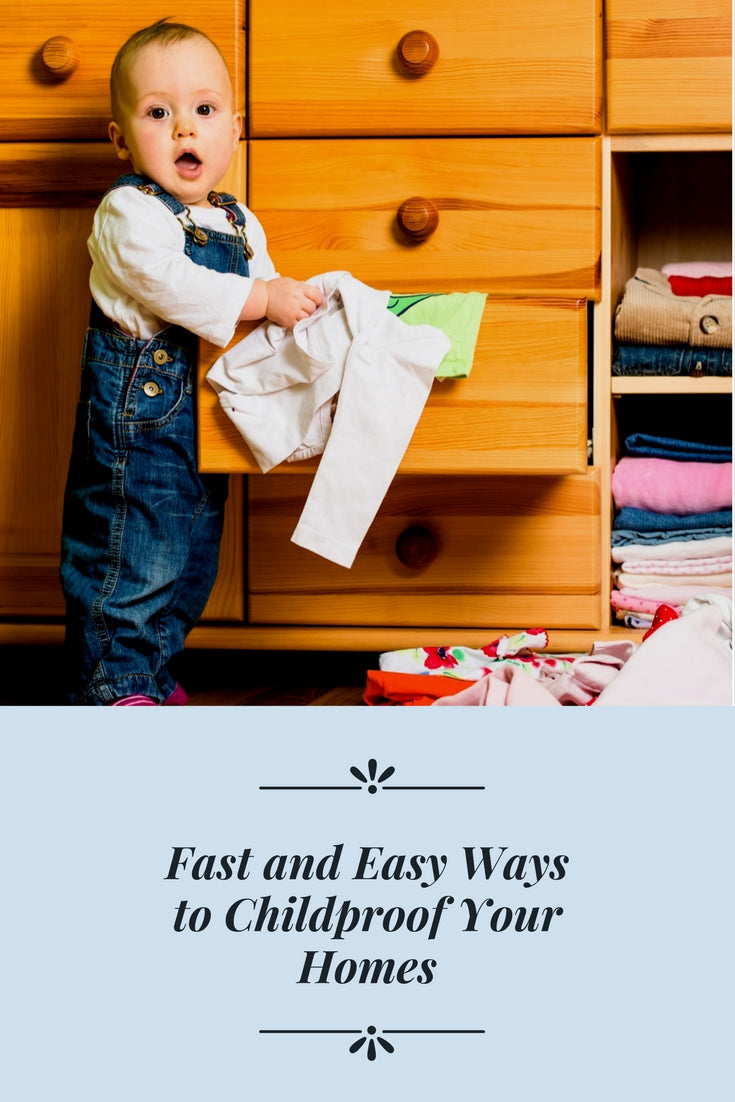
Child-Proofing 101: It’s Never Too Early
I’m sure you will all agree with me that when it comes to the safety of our children, it’s never too early or too much. As parents, we will do whatever it takes within our means to ensure that our little ones are safe and protected.
So when it comes to child-proofing your home, it’s never really too early to start. Whether you are just planning to get pregnant, your baby is on the way or was just born, it’s good practice to prepare early and anticipate the risks by the time your child starts crawling, walking or more so, running! Did you know that crawling babies can cover quarter of a mile while you make your coffee? Or a walking baby can be out the garage or the streets while you turn off the washing machine? They are quicker than you can imagine!
Here are some of the basic hazards around the house and how to secure them. However, do note that no amount of child-proofing can replace close supervision. Never let them out of your sight even for a split second, unless they are in a secured spot such as their play pen (sans choking or suffocation hazards like small toys and soft, thick bedding's and pillows that can cause suffocation).
- Lock cabinets and drawers. Use locks and baby latches to make sure that your child won’t access the contents of your cabinets especially around the kitchen where you keep potentially toxic substances. Better yet, place toxic materials like detergents and cleaning agents locked outside the house.
- Secure appliance and heavy furniture. Flat Screen TV is one of the easiest appliances to tip over and fall on your child. Tipping accidents can be serious and even fatal. Secure your Flat Screen TVs as well as heavy furniture that are at risk of toppling by securing them to the wall using Anti-Tip Straps. It’s an easy, inexpensive and practical solution that can save lives!
- Limit access to certain parts of the house by using gates. Same goes for stairs. Make sure it’s always gated and securely locked.
- Keep the water level of the bath only until their legs to avoid drowning. Use non-slip mats and soft guards for faucets. Also make sure to do elbow tests to avoid scalding your babies with water that’s too hot for their sensitive skin.
- Keep away loose objects that can be choking hazards. Coins, keys, marbles, small figurines – these are all attractive things that your child can easily put into their tiny mouths!
- Secure sharp edges. As much as possible, opt for round-edged tables or furniture. For sharp edges, cover them with cushioned strips or padded guards to protect your babies from banging their heads or poking their eyes while exploring.
- Keep loose electrical or drapery/blinds cords tied up and out of reach. Babies can chew on electrical cords, causing electric shock, or they can pull the blind cords which can strangle them.
- Cover your electrical outlets with guards that shuts off when the outlets are not in use. Babies are in high risk of electric shock as they will often stick their fingers which may be wet with saliva into the socket. If you can keep the outlets at the back of furniture so your child cannot access them, even better.
- When feeding your pets, make sure your babies are in a separate room. You don’t want them sharing dinner with their furry friends!
There are some professional help you can get to secure and child-proof your homes. It’s great if you have the resources to avail them. But if not, you can definitely start and do it on your own too! There’s a lot of helpful child-proofing products nowadays that you can easily buy and install.
Start by getting down on your knees to see the world from your child’s point of view so you will get a better sense of what looks attractive to them and what are the potential hazards that they can have access to. More so, keeping your homes safe is a continuous effort. As your child grows, re-assess. From crawling and as they learn to walk and explore more, what additional risks can you identify? Being in the know is the first step to address them.
Sources:
https://www.babycentre.co.uk/a536364/childproofing-checklist-before-your-baby-crawls
https://www.babycenter.com/0_childproofing-around-the-house_460.bc
http://www.parents.com/baby/safety/babyproofing/babyproofing-basics/
